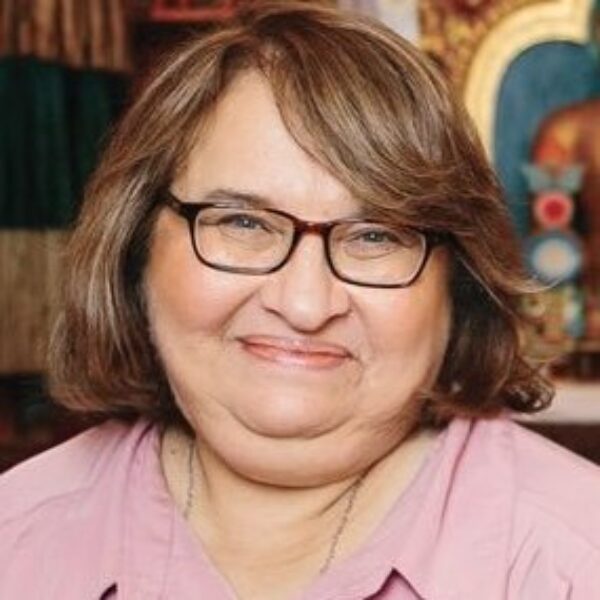
The Paths We Take Tumble Together
In the wake of the election results, I’ve noticed an unsurprising trend in my many conversations, in person and online — uncertainty, fear, anger. I know I’m not alone in this observation.
Yet over the week of Thanksgiving, I remembered how I had recently been inspired by my friends Marc and Ed. They fell in love after meeting at a monastery and are now married, and they spent a chunk of this fall on a pilgrimage to the Spanish city of Santiago de Compostela.
The pilgrimage route is known as “the Way of St. James,” and even more commonly as “the Camino,” and has been one of the most popular pilgrimage routes for Christianity since the Middle Ages. According to legend, the remains of St. James were transported from Jerusalem to northern Spain, where he was buried in the contemporary city of Santiago de Compostela. And as Marc and Ed commented, pilgrimages are a “way of praying in a very physical way,” and have traditionally provided the opportunity for supplication, atonement, and gratitude. Together, Marc and Ed decided that their journey would be one of gratitude.
In a blog post written months before their trip, they explained,
“It will be a journey of gratitude for these many years of God’s gift of our love and commitment to and for one another. It will be a journey in which we will hold in our hearts the intentions of all those friends who are supporting us.”
“What the pilgrimage will be in the end, what it will hold, and what it will reveal to us,” they concluded, “remains a mystery as does so much in life.” To find a sense of expansiveness and excitement in the uncertainty of such a well-trodden journey, with its history and spiritual reputation, struck me as such a powerful instance of mindfulness. Marc and Ed were not only choosing to write their own story, but to allow their story to unfold however it did.
In an early post on their blog — about a week into their journey — Marc and Ed began reflecting on the nature of their experience, and how they were to understand the collective journey versus their individual journeys. This, too, seems like a powerful way to “see the world with quiet eyes,” an idea coined by theologian Howard Thurman. “I think it’s fair to say there are really three pilgrimages going on with us,” they wrote.
“There’s our pilgrimage together but simultaneously we really each have our own personal journeys… We walk together, marvel at the stunning sights and visuals, and then there are times that can go for miles and miles in total silence, not a word spoken between us, just walking, just keeping our hearts open to each new day’s offerings.”
Whether we are physically with our close friends, family members, or partners in a given moment — or whether we are merely walking on the street beside strangers — Marc and Ed’s insight can be a general guiding principle for thinking about our fundamental interconnection. We can share our experiences — from expressions of political angst to admiration for a beautiful sunset — with the people we love and know, while at the same time sharing something else larger and more ineffable with all beings. We can walk together, conscious of that togetherness, or we can walk together as we walk alone.
On their pilgrimage, Marc and Ed not only had their collective journey and their independent journeys, but they also shared their walk with all of the other pilgrims on the route with them. They shared the pilgrimage with all the pilgrims before them. And all of their lives have, and have had, something to do with one another. We may not be able to comprehend the reasons for certain current events — related to the election or not — or why there is so much suffering in the world. But we can place faith in our interconnectedness, and know that our actions have an impact on our lives and others, if we acknowledge this shared recognition of humanity.
In terms of the day-to-day, Marc told me that the pilgrimage felt like:
“a very intense daily meditation practice, a long walking meditation where I was aware of every step and where my mind was free to reflect on whatever thoughts arose.”
Marc’s thoughts oscillated between inspiring ones — those that came up as they “climbed high into the Pyrenees or walked through amazing medieval villages that have barely changed in hundreds of years” — and others that were “penetrating and difficult.” Walking during these thoughts serves as a nice model for how to respond to these inevitable shifts we experience in our minds each day — a constant movement through constant change.
Ed supported Marc’s reaction that the Camino was “many things.” Poignantly, Ed likened the experience to being a rock in a rock tumbler, wherein:
“you put rocks of different shapes, sizes, colors, textures, some rough, some smoother into a barrel tumbler, turn it on so that the rocks all bump into and rub up against one another and after the process is complete and you take the rocks out each has been transformed into a new, smooth but different and unique thing of beauty.”
For Ed, “the tumble of Camino life” brought him — and all of the pilgrims — up against “joy, suffering, beauty, anger, frustration, depression, peace, chaos, pain, your past, your present, the unknowns of your future, your inevitable death. You just never knew.”
In a way, every day feels like a journey into the unknown, with the attendant possibilities of danger, defeat, and lost moorings. I try to remind myself, every day, that I can reframe this time as a time of pilgrimage, with attendant possibilities of profound companionship, unexpected strengths, and transformation.

Share your reflection